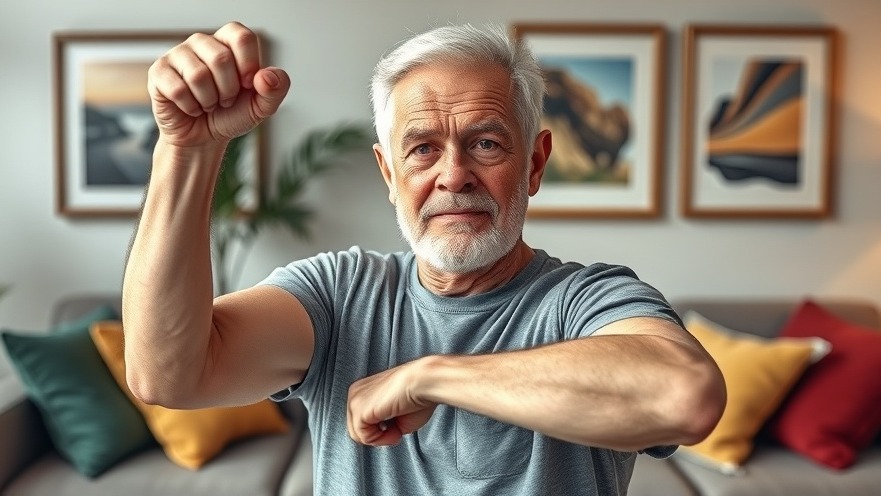
Understanding Flabby Arms: Causes and Concerns
As we age, maintaining a toned physique can be challenging, especially for middle-aged and senior adults. Flabby arms, a common concern, often result from a combination of factors including weight gain, loss of muscle mass, and decreased skin elasticity. Understanding these causes can help motivate lifestyle changes that promote overall health.
In The Flabby Arm Fix!, the discussion dives into key insights on fitness and wellness strategies for seniors, and we’re breaking down its important themes while adding our own perspective.
Addressing Flabby Arms with Simple Exercises
To combat flabby arms, incorporating simple strength-training exercises into your routine can be incredibly effective. Resistance exercises such as tricep dips, bicep curls, and push-ups can help tone the arms without demanding excessive time or equipment. By developing a weekly workout regimen, individuals can significantly improve muscle tone and stability.
The Importance of Mindfulness in Physical Fitness
Mindfulness plays a crucial role in overall well-being and mental health, especially for seniors. Incorporating mindfulness exercises like yoga or tai chi can enhance the benefits of physical exercises aimed at improving arm strength. These practices not only relax the mind but also improve flexibility and balance—factors that contribute to holistic health.
Nutrition for Arm Health: What to Include
A balanced diet is essential in supporting muscle health and recovery. Seniors should focus on consuming plenty of protein-rich foods such as lean meats, legumes, and nuts, along with fruits and vegetables rich in antioxidants. Incorporating omega-3 fatty acids found in fish can also benefit muscle recovery and overall cognitive health, making meals not just nutritious but conducive to an active lifestyle.
The Role of Stress Management in Fitness
Managing stress is vital for seniors, especially since it can lead to unhealthy lifestyle choices that exacerbate physical issues like flabby arms. Techniques such as deep breathing exercises and guided imagery can help reduce stress, enabling better focus on fitness goals. Social connections and support groups for mental health can significantly benefit stress levels, allowing seniors to pursue their fitness journeys collaboratively.
Creating an Effective Bedtime Routine
Sleep plays a crucial role in muscle recovery and overall health. Developing a calming bedtime routine can aid in achieving better sleep quality, ultimately supporting physical fitness goals. Seniors should aim for a consistent sleep schedule, avoid caffeine late in the day, and engage in relaxing activities before bed, such as reading or gentle stretching. Enhancing sleep hygiene not only promotes muscle recovery but also boosts mental clarity and emotional resilience.
Success Stories: Real-Life Experiences
Hearing about real-life success stories can motivate individuals to take action. Consider the story of Janet, a 65-year-old retired teacher who transformed her flabby arms into toned ones through a combination of strength training exercises and mindful practices like yoga. Janet attributes her success to building a supportive community and prioritizing her health, a journey that has inspired many around her.
Concluding Thoughts: Embracing Health at Any Age
Taking proactive steps toward improving fitness, including addressing flabby arms, is crucial for seniors aiming to maintain their well-being. By combining exercise with mindfulness, good nutrition, and adequate sleep, individuals can enjoy a healthier lifestyle. Remember, it’s never too late to focus on physical health, and the journey can be as rewarding as the destination.
 Add Element
Add Element  Add Row
Add Row 



Write A Comment